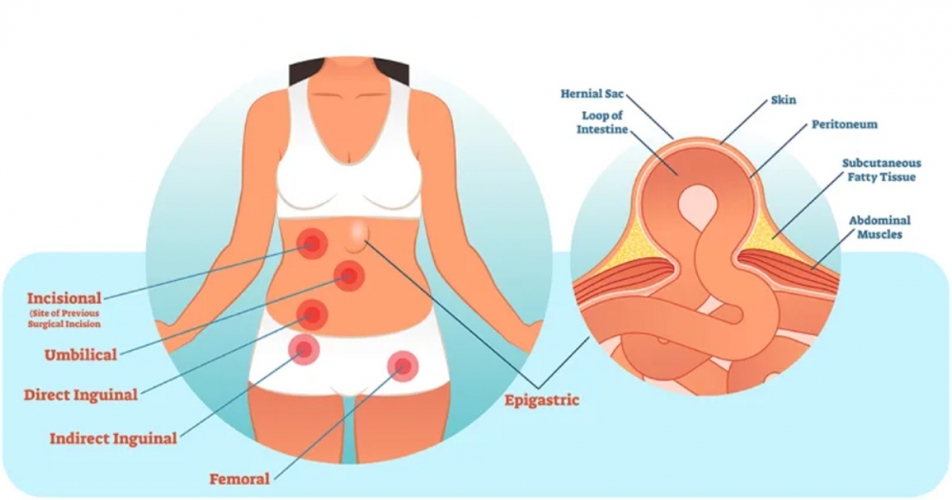


A hernia is an abnormal opening in a part of the muscle layer of the abdominal wall, which supports the internal organs, such as the intestines and stomach. A hernia is usually suspected when a lump is felt under the skin protruding through the defect in the muscle layer. Such a lump can appear or increase in size when straining of the muscles causes parts of the internal abdominal contents to be pushed through the opening.
The most common place for a hernia is in the inguinal, or “groin” area.
Other common locations for a hernia are around the umbilical or belly button area, where there is a natural weakness of the tissues. Such hernias can be more common in women after pregnancy, or generally in people who are overweight.
Hernias can also be occur through previous surgical scars, and even internally within the abdominal cavity, such as hiatus hernias and other rarer types of hernias.
Hernias are most commonly repaired laparoscopically, by keyhole surgery. Occasionally, the open repair method is used for smaller hernias, such as small umbilical hernias, as it is simpler and quicker surgery, with smaller incisions, and much lower risks of complications.